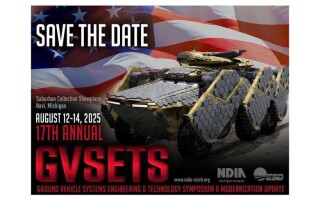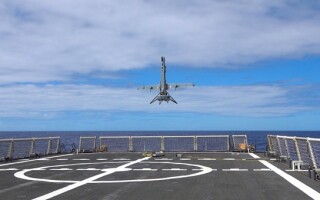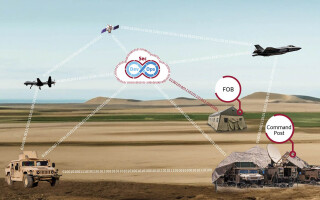Littoral Combat Ships: getting back to the basics
OtherSeptember 05, 2016

Engineering casualties are plaguing the fleet of Littoral Combat Ships (LCS). In the past year, four ships have been sidelined because of design and engineering issues, as well as personnel errors. The thing about engineering casualties, it?s a time for the underdog to shine.
Engineering casualties
In December 2015, USS Milwaukee (LCS-5) was sidelined because the ship did not to disengage the combining gear. After troubleshooting, debris was found in the starboard combining gear of the propulsion system. A software glitch caused this casualty that ultimately cost the ship to be out of commission for months.
USS Fort Worth (LCS-3) endured a casualty in January 2016 to its combining gears due to personnel not following procedures properly. A U.S. Navy release mentions the casualty occurred during the operational test of the port and starboard main propulsion diesel engines (MPDEs). I don’t think this would have made news except for the fact that the casualty happened on the Navy's new class of warship.
During a Rim of the Pacific (RIMPAC) exercise in July of 2016, USS Freedom (LCS-1) had its own engineering casualty to its MPDE. The cause, according to a Navy news story, was a “leak from the attached seawater pump mechanical seal that resulted in seawater entering the engine lube oil system.” This was not the first time the ship made headlines, in 2013 the USS Freedom’s generators overheated and shutdown (not a fun experience), consequently the ship was docked in Singapore for some time as engineers found that coolant problems and sediment in the ship’s oil system were the issue.
USS Coronado’s (LCS-4) engineering casualty this past week forced the ship to head back to Pearl Harbor to assess the damage. USNI reported “the root cause is unknown, but the two sources said crew members saw electricity arcing around the Vulkan shaft and coupling system that routes the output from the ship’s General Electric LM 2500 gas turbines and MTU main propulsion diesel engines to the ship’s waterjets.”
These issues point to one sector in the Navy: the engineering department. The Navy has already conducted investigation in the previous mishaps and will continue to investigate current ones. What some people may not notice because of the dollar amount associated with these engineering casualties is that the sailors stepped up and performed. The USS Coronado returned to Pearl Harbor on its own, restricted to 10 knots, but the situation could have been worse.
In a Congressional Research Service (CRS) report published in June 2016, officials addressed the issues surrounding some of these breakdowns. “The committee is concerned by a series of recent significant and costly engineering casualties on Littoral Combat Ships (LCS), including: mechanical failures contributing to USS Freedom being underway for just 35 percent of its deployment in the 7th Fleet area of responsibility in 2013, a fuel valve and combining gear failure on the USS Milwaukee in 2015, and a combining gear casualty on USS Fort Worth in 2016. The committee believes establishing a LCS propulsion and machinery control test capability would provide the Navy with a critical resource that is currently lacking to troubleshoot issues, identify root causes of casualties, and provide in-depth training to sailors. The net effect of such a test capability would be to reduce the time, cost, and inexperience associated with LCS propulsion and machinery control casualties.”
A machinery control test capability would help sailors to understand what is going on with this new class of ship that is equipped with technology not seen in previous ship designs.
The new warship
LCSs were designed to be the new warship for the Navy. After a series of studies conducted after the Operation Desert Storm and the Cold War, it was decided that a new type of ship that could operate near shore was required. The LCS was born to meet that need. To up the ante, Navy officials also decided the ship should be flexible enough with plug-and-play type of capabilities and meet the needs of different types of missions areas throughout its lifecycle.
What I find to be cool and that to me differentiates the LCS from other ships is that the ship“utilizes waterjet propulsion, combined diesel and gas turbine engines, which can be configured for the high sprint speed or the slower speeds for transiting the open ocean.” The ship’s propulsion system configuration allows for a faster ship – now image racing on this puppy?
The ships come in two variants and have three mission packages: Surface Warfare (SUW), Mine Counter Measures (MCM) and Anti-Submarine Warfare (ASW). In other words, in an ideal world depending on its mission package, the ship can conduct operations under any of this three mission areas, although this kind of flexibility has changed from the initial design plans. Lockheed Martin is the prime contractor for the odd number of LCSs such as the USS Fort Worth, USS Freedom, and USS Milwaukee. General Dynamics [LCS-2 and LCS-4] and Austel USA [LCS-6 and so forth] heads the even number of LCSs: USS Coronado.
The CRS report goes into every detail of what plagues the program stating: “The LCS program has been controversial over the years due to past cost growth, design and construction issues with the lead ships built to each design, concerns over the ships’ survivability (i.e., ability to withstand battle damage), concerns over whether the ships are sufficiently armed and would be able to perform their stated missions effectively, and concerns over the development and testing of the ships’ modular mission packages."
The LCS idea was grand and ultimately in need of adjustment through the years. Two points of interest from the report stood out the most. One is the Navy had planned to procure a total of 52 ships and now it will only be 40. The program has undergone some changes and “as a result of the restructuring, the final 20 ships in the program (ships 33 through 52), which were to be procured in FY2019 and subsequent fiscal years, were to be built to a revised version of the baseline LCS design, and were to be referred to as frigates rather than LCSs,” the report states.
The second point of interest is that the Navy changed the program’s name from LCS program to LCS/Frigate program. The last 20 ships that will have the designation of frigates will be built as a modified version of the LCS. The LCS-class ships will have multi-mission capabilities versus being able to interchange mission areas.
The factors, I believe, that are influencing all these changes range from budget funding to the new threats that are emerging around the world.
Getting back to the basics
From reading these reports to all the news stories that are coming out saying that “LCSs are dropping like flies,” the thing to understand is that sometimes we just need to get back to the basics.
Chief of Naval Operations Adm. John Richardson gave a statement on these casualties, "To address the personnel and training issues, I established a program-wide review earlier this summer to incorporate deployment lessons learned and identify systemic problems with how the program was structured. Vice Adm. Rowden has completed the review, which recommends changes to the crewing, deployment, mission module, training and testing concepts. These changes will provide more ownership and stability, while also allowing for more forward presence. In light of recent problems, we also recognize more immediate action needs to be taken as well. The review is being briefed to leadership before implementation. I also support Vice Adm. Rowden's decision to improve oversight class-wide, which will result in the retraining and certifying of all LCS Sailors who work in engineering."
The big difference between an LCS and the rest of the fleet is that crew level maintenance along with corrective maintenance is being done ashore with distant support and flyaway teams. This is basic-level work. If sailors are not performing maintenance, then they will not learn how to troubleshoot their systems. If something breaks down by committing errors in following procedures or cooling pumps breaking down, sailors will not know how to fix it.
If this is true throughout the LCS fleet, how are engineers supposed to keep the ship running if they are only operators? Is the Navy going to continue to foot the bill for new engines and towing capabilities?
Systems are going to break down. A system is only as good as the human operating it. If that sailor doesn’t understand how important the seawater service pumps are to the engines, how to perform required maintenance, then that system will eventually break down. You can’t fly in experts every time a something breaks down.
Arguably, Naval engineers are the most under appreciated class of sailors. Without fuel, without power, the ship is dead in the water. Engineers are the heart of the ship pumping the fuel and electricity to all the radars, sonar, the displays, the ship’s console… They are not operators. They are the ones conducting maintenance and repairing the ship’s engines, cooling pumps, troubleshooting power outages, etc.
What’s going on with the LCS fleet - this is the stuff that keeps you up at night, or for the sadistic engineer the kind of stuff you crave simply because it’s time to do some real work.
To learn more about the LCS, click here.








